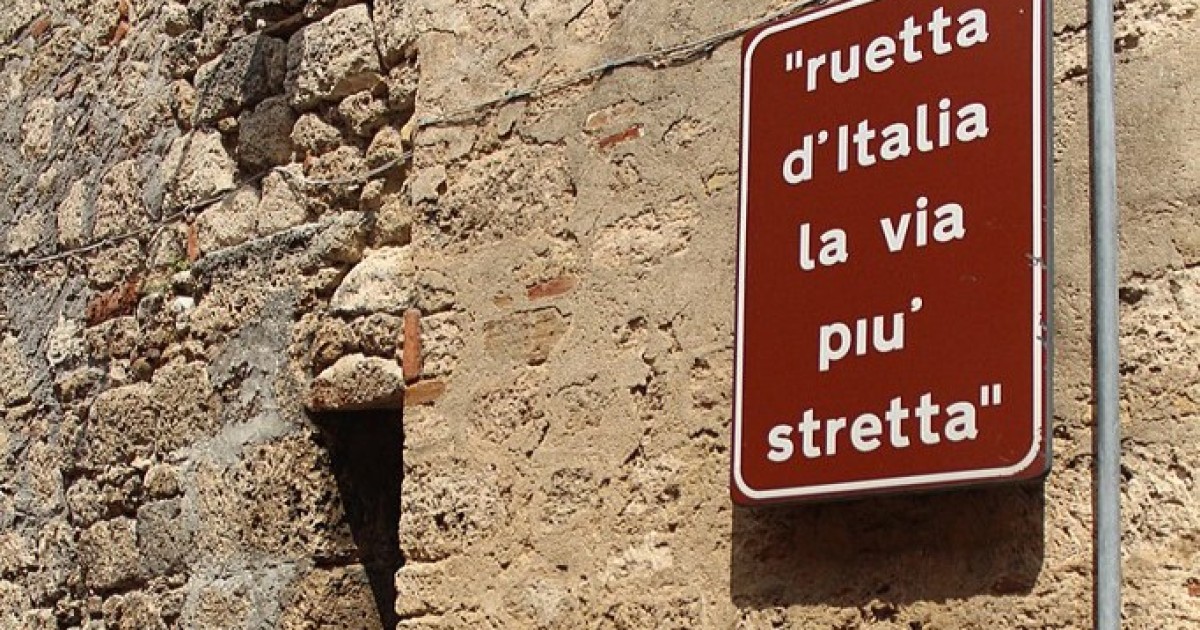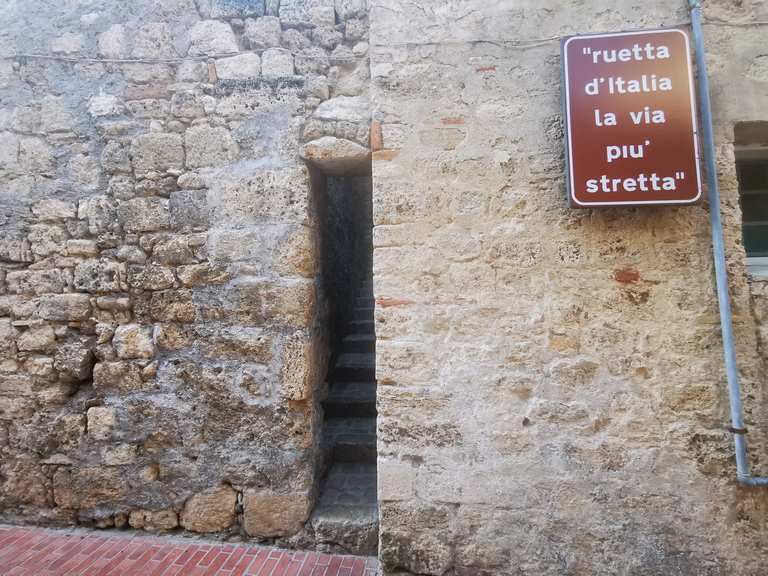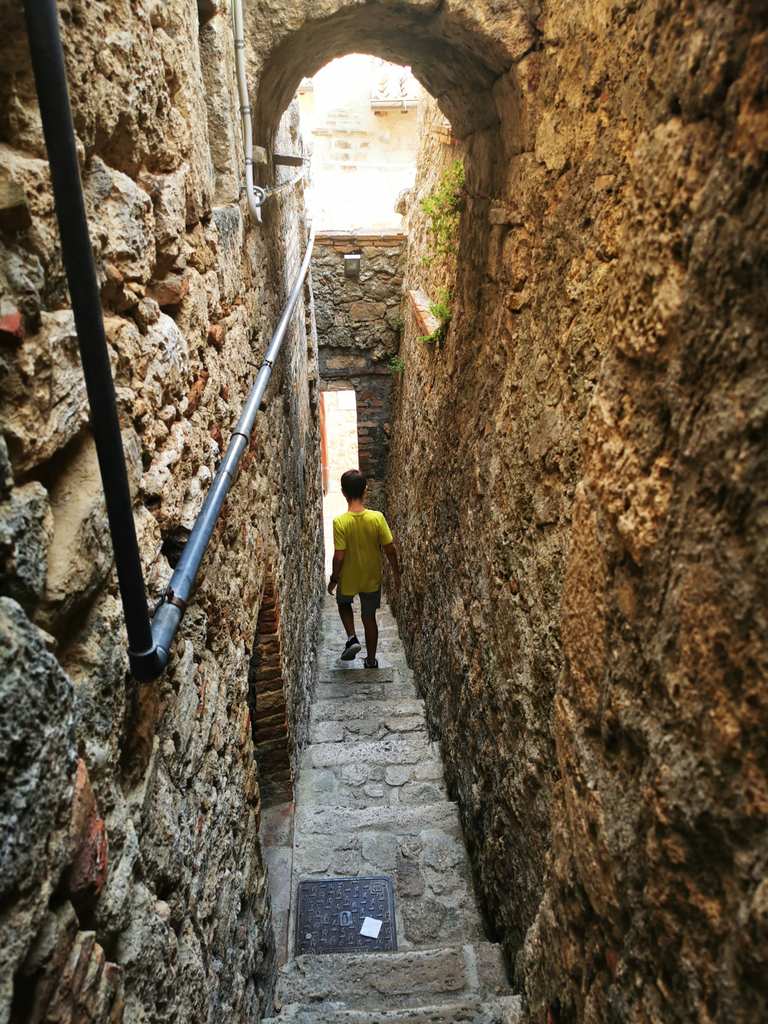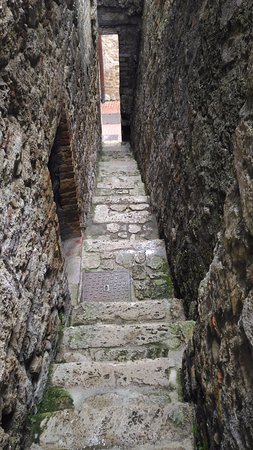Nestled near the entrance to the medieval fortress of Civitella del Tronto in Abruzzo, Italy, lies a remarkable and enigmatic feature—La Ruetta, the narrowest street in Italy. Measuring only 40 cm in width, this tiny passageway has withstood the test of time and continues to captivate those who visit. Not just a quirky curiosity, La Ruetta offers a fascinating insight into the defensive strategies of medieval cities and the ingenuity of the architects who designed it. In this article, we’ll explore the historical significance and defensive purpose of La Ruetta, as well as its enduring legacy in modern times.
The Strategic Purpose of La Ruetta
La Ruetta was not designed for convenience or aesthetics; its purpose was deeply strategic. In medieval times, particularly in fortified cities, streets like La Ruetta were deliberately constructed to prevent enemy armies from advancing easily through the city. The tight, constricted space of the passage made it impossible for large groups of soldiers or cavalry to pass through. This narrow design ensured that invaders could be slowed down or trapped in bottlenecks, giving defenders a significant tactical advantage.

The design of La Ruetta, like many narrow medieval streets, was often a labyrinthine maze meant to confuse invaders. With no easy routes for an invading army to traverse, defenders could hide in the buildings on either side or take higher vantage points, ambushing any forces that attempted to navigate through the streets. This street was not only a physical obstacle—it was part of a larger defense network meant to make it easier for the locals to resist outside forces.
A Symbol of Medieval Ingenuity
While the functional aspect of La Ruetta is clear, it also serves as a symbol of the adaptive ingenuity found in medieval urban planning. In an era where space was limited and the need for defense was paramount, these narrow streets were an excellent example of how cities were designed for both utility and survival.

Rather than sprawling roads that could be easily overrun by invaders, the streets of fortified cities like Civitella del Tronto were designed to maximize defense. La Ruetta, with its narrow width, was perfectly suited for this purpose. The strategic value of such streets was undeniable: when enemies approached, defenders could launch surprise attacks from concealed positions, using the very narrowness of the passage to outmaneuver and overwhelm their adversaries. In this way, La Ruetta was both a defensive tool and an urban element that contributed to the protection of the city’s inhabitants.
The Legacy of La Ruetta Today
Today, La Ruetta remains a powerful reminder of the medieval history of Civitella del Tronto and its role in defending the region of Abruzzo. As part of the well-preserved fortress town, La Ruetta continues to attract visitors interested in the tactical brilliance of ancient defense strategies. Tourists and historians alike marvel at this narrow passage, which serves as a symbol of the ingenuity and resilience of those who lived and defended their city centuries ago.

The street is not just a historical curiosity but an integral part of the larger fortress complex, contributing to the charm and mystery of Civitella del Tronto. It continues to speak volumes about the adaptability of the people who lived in this fortified town and their ability to design urban spaces that prioritized both survival and function.

Conclusion
La Ruetta di Civitella is far more than just a narrow street—it’s a testament to the foresight and creativity of medieval engineers and architects. While it may seem like an oddity today, this tiny passageway played a vital role in protecting the inhabitants of Civitella del Tronto from invaders. As we stand in this 40 cm wide space, we are reminded of the delicate balance between architecture, strategy, and survival that characterized the lives of people in fortified cities. La Ruetta remains an enduring symbol of the brilliance of medieval defensive design and the resilience of those who lived in a world constantly under threat.

